
Roots
The very character of the water touching our strands holds sway, often in ways unseen, shaping not just how our coiled hair feels, but also its vibrant hue. For those with textured hair, a lineage often connected to diverse landscapes and ancestral practices, the relationship between water and hair is a profound one. It extends beyond simple cleansing; it touches upon the very integrity of the hair shaft, influencing its ability to hold color, whether natural or enhanced. This journey into water’s subtle yet potent influence begins at the hair’s foundational architecture.
Consider the intricate nature of a single strand of coiled hair. Unlike straight hair, its elliptical shape and unique cuticle patterns present a greater surface area, with more points for environmental elements to interact. This structural distinction means that what flows from our taps can interact with textured hair in ways that are distinct and sometimes more pronounced. The mineral content, pH balance, and even the presence of certain disinfectants in water can leave their mark, subtly altering the hair’s surface and, in turn, its optical properties.

The Hair Shaft and Water’s Touch
The hair shaft, primarily composed of keratin protein, possesses a complex outer layer known as the cuticle. These overlapping, scale-like cells protect the inner cortex, where melanin pigments reside. When water interacts with hair, it can affect the cuticle’s integrity.
Hard water, laden with dissolved minerals such as calcium and magnesium, tends to lift these cuticle scales. This lifting action can create a rougher surface, diminishing the hair’s natural sheen and making it more susceptible to external aggressors.
This altered surface texture, in turn, influences how light reflects from the hair. A smooth, closed cuticle reflects light evenly, contributing to a vibrant, rich appearance. A roughened, mineral-coated cuticle, however, scatters light, often leading to a duller, less defined color. Over time, the continuous deposition of these minerals can create a film on the hair, further obscuring its true pigment.

Understanding Water Hardness
Water hardness is a measure of the concentration of dissolved minerals, predominantly calcium and magnesium ions. These minerals are naturally present in water as it passes through geological formations like limestone and chalk. The higher the concentration, the ‘harder’ the water. This concept is often quantified in grains per gallon (gpg) or milligrams per liter (mg/L).
- Calcium Ions ❉ These common culprits can cling to the hair shaft, forming a visible or invisible film. This accumulation can lead to stiffness and a lackluster appearance, directly impacting how natural or applied hair color presents itself.
- Magnesium Ions ❉ Similar to calcium, magnesium contributes to mineral buildup, contributing to hair that feels less pliable and appears less radiant.
- Iron ❉ Often present in well water or older plumbing systems, iron can cause a particularly noticeable discoloration. It oxidizes upon contact with air, leaving behind reddish-brown deposits that can tint lighter hair or add an unwanted brassiness to darker shades.
The cumulative effect of these minerals extends beyond mere aesthetics. They can hinder the penetration of conditioning agents, leaving hair feeling dry and brittle. This dryness can make the hair more porous, inadvertently allowing more mineral absorption, thus creating a challenging cycle for maintaining hair health and color vibrancy.
The interaction between water quality and coiled hair color begins at the hair shaft’s structural integrity, where mineral deposits can obscure natural vibrancy.

PH Balance and Hair Integrity
The pH scale measures the acidity or alkalinity of a substance, ranging from 0 (highly acidic) to 14 (highly alkaline), with 7 being neutral. Healthy hair and scalp typically have a slightly acidic pH, usually between 4.5 and 5.5. This acidic environment helps to keep the hair cuticle smooth and sealed.
When hair is exposed to water with a high pH (alkaline water), the cuticle tends to lift and open. This opening of the cuticle can lead to several undesirable outcomes. It can cause the hair to swell, increasing its porosity and making it more vulnerable to damage.
For colored hair, an open cuticle means that dye molecules are more likely to leach out, leading to premature fading. For natural hair, it can expose the melanin within the cortex to external elements, potentially leading to subtle shifts in its inherent hue.
Understanding the foundational interaction between water and the very fiber of coiled hair provides a starting point for addressing how water quality might subtly, yet significantly, alter its color. It is a dialogue between the elemental and the deeply personal.
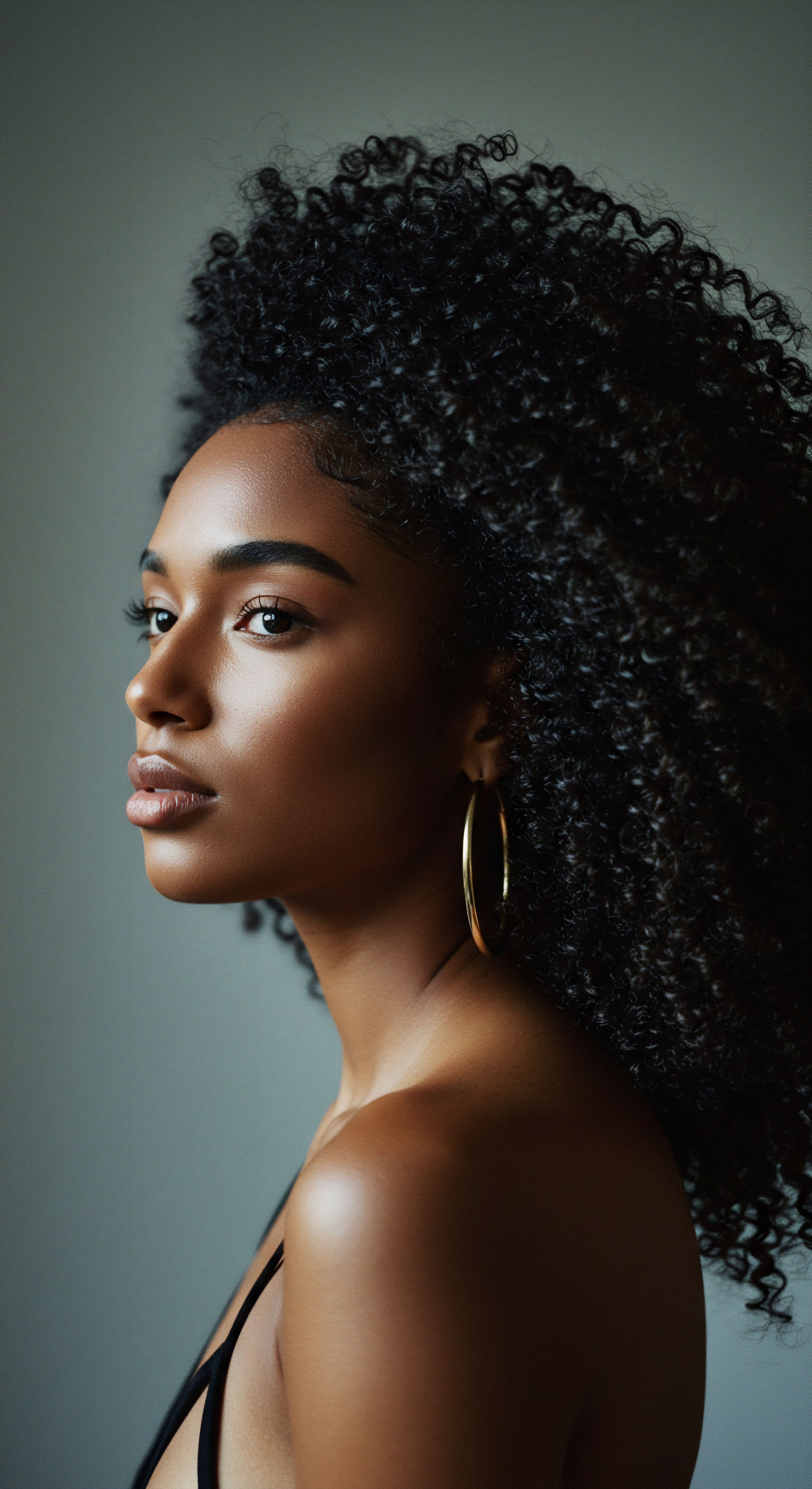
Ritual
Our daily interactions with water, from cleansing to styling, form a ritual that shapes the very being of our coiled strands. It is in these moments of conscious care that we seek practical wisdom, understanding how to mitigate the unseen forces within our tap water. The shift from simply knowing to actively doing, from recognizing water’s elemental influence to integrating that recognition into our hair practices, is where true transformation begins. This section seeks to guide through the practical applications, acknowledging the nuanced dance between water quality and the preservation of our hair’s inherent beauty.
The choices we make in our hair care practices can either amplify or diminish the impact of water quality. From the products we select to the tools we employ, each step holds significance. For those with coiled hair, whose unique structure often demands specific attention to moisture retention and cuticle health, tailoring our ritual to address water-borne challenges becomes a central pursuit.
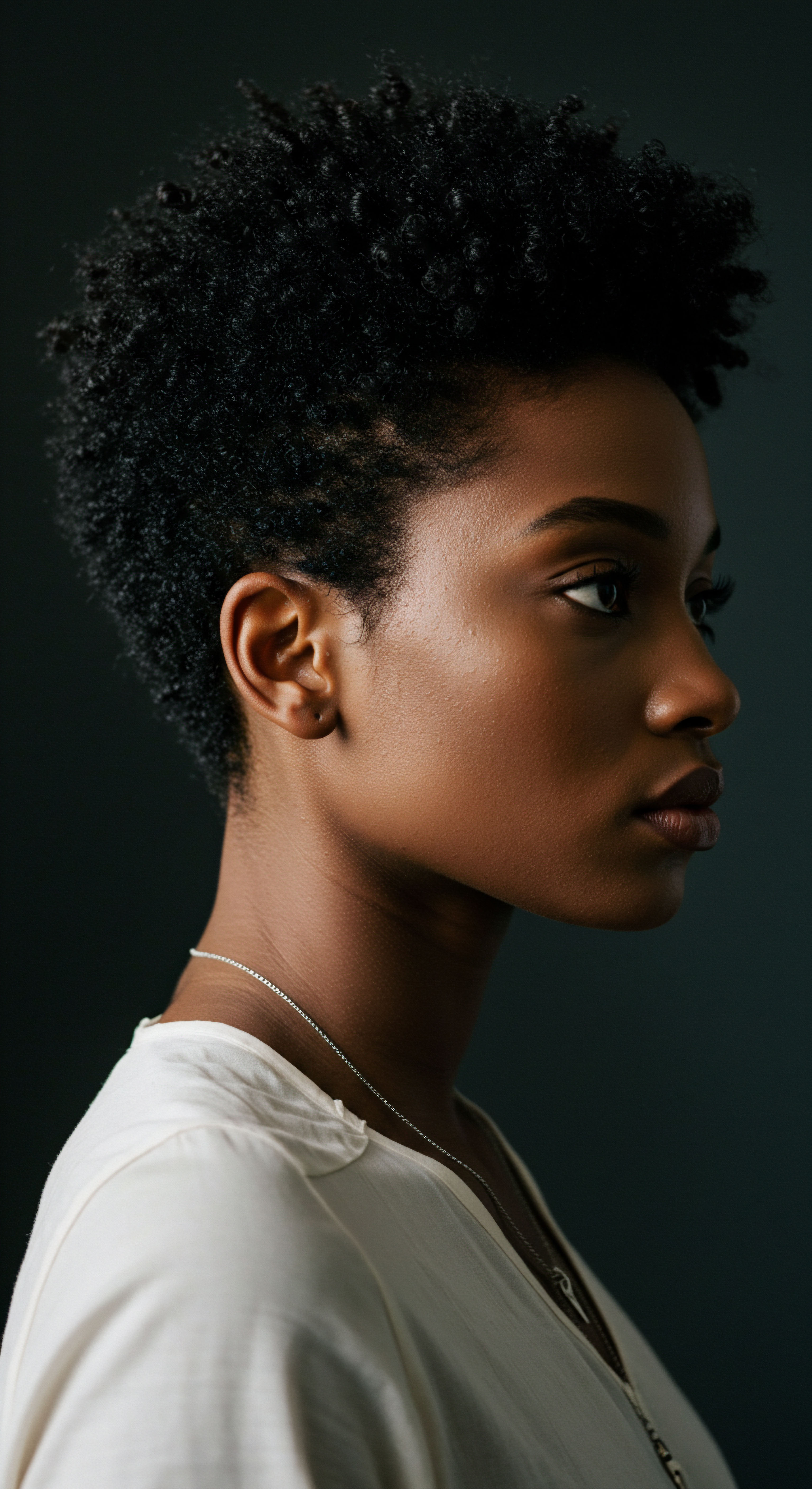
Selecting Cleansing Agents
The shampoo and conditioner chosen play a significant role in counteracting the effects of hard water. Look for products specifically formulated to address mineral buildup. These often contain chelating agents, which are molecules that bind to minerals like calcium, magnesium, and iron, allowing them to be rinsed away from the hair shaft.
- Chelating Shampoos ❉ These are distinct from clarifying shampoos, though clarifying shampoos can offer some benefit. Chelating shampoos contain ingredients like EDTA (ethylenediaminetetraacetic acid) or phytic acid, which are particularly effective at grabbing onto mineral ions.
- PH-Balanced Conditioners ❉ Following a chelating cleanse, using a conditioner with a slightly acidic pH can help to reseal the hair cuticle, restoring smoothness and contributing to better light reflection, thus enhancing color appearance.
- Sulfate-Free Options ❉ While not directly addressing mineral buildup, sulfate-free shampoos are often gentler on the hair, helping to preserve its natural oils and moisture, which can be stripped by hard water, leading to further dryness and potential color dullness.
The frequency of using chelating products should be considered. For some, a weekly or bi-weekly treatment might suffice, while those in areas with exceptionally hard water might benefit from more regular use. Overuse, however, can sometimes lead to excessive stripping of the hair’s natural oils, necessitating a careful balance.
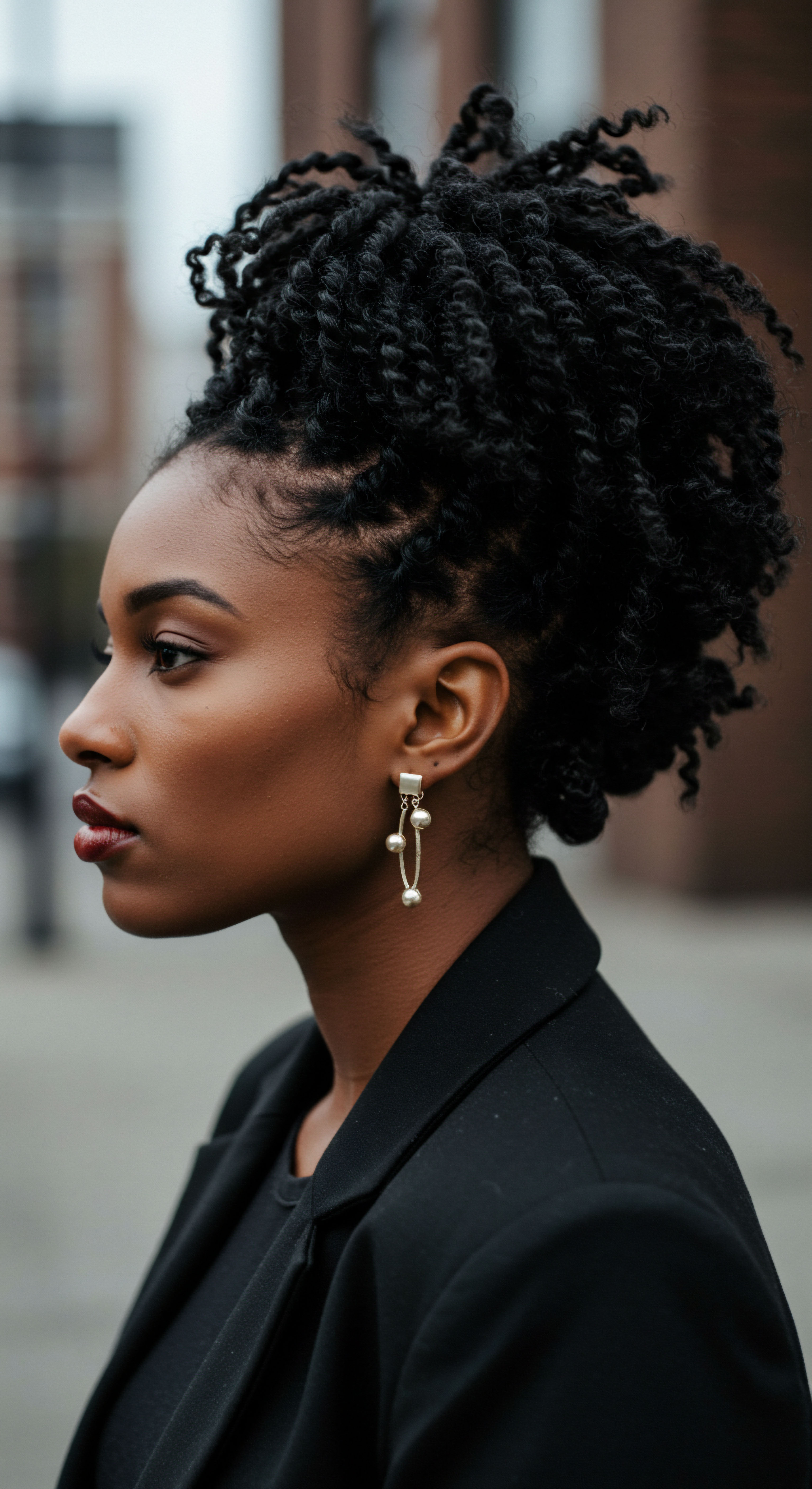
Shower Filtration Systems
One of the most direct ways to alter the water’s impact on coiled hair is to modify the water itself at the source. Shower filters are designed to reduce or remove various impurities, including chlorine, chloramines, heavy metals, and sometimes even dissolved minerals that contribute to hardness.
The effectiveness of a shower filter varies depending on its filtration media. Some filters utilize activated carbon to reduce chlorine, while others employ KDF (Kinetic Degradation Fluxion) media, which is effective against chlorine, heavy metals, and some water-soluble cations. While a shower filter might not completely soften extremely hard water, it can significantly lessen the burden of harsh chemicals and mineral deposits on the hair. This proactive step can contribute substantially to maintaining hair color’s depth and sheen over time.
Integrating practical solutions like chelating shampoos and shower filters into hair rituals can effectively counteract water quality’s impact on coiled hair color.
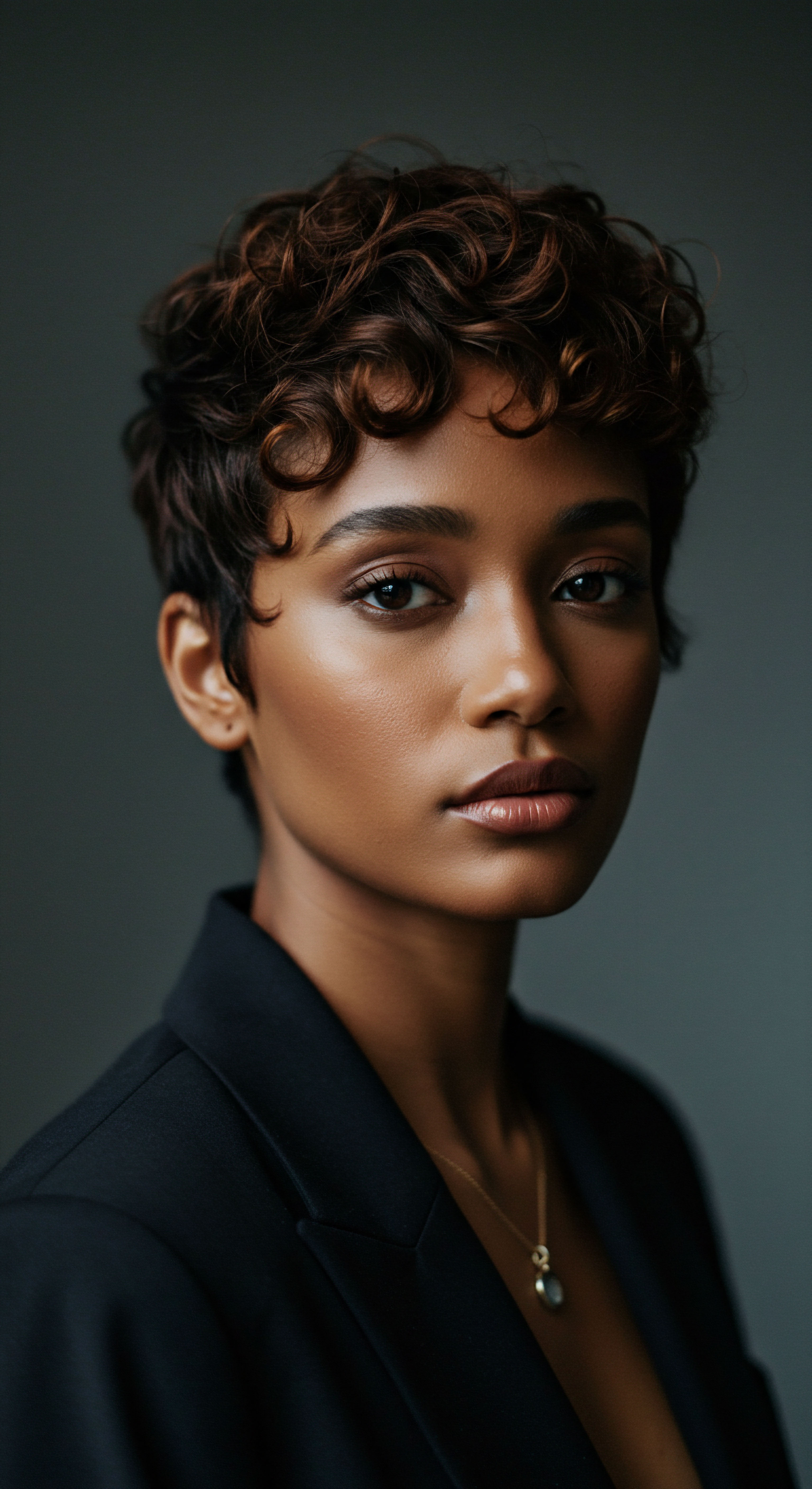
The Art of Rinsing
The way we rinse our hair also plays a subtle yet significant role. Thorough rinsing is paramount, especially after using cleansing or conditioning products, to ensure no residue is left behind that could attract further mineral buildup or dull the hair.
For those seeking to maintain vibrant hair color, a final rinse with cooler water can be beneficial. Cooler water helps to close the hair cuticle, sealing in moisture and color, and contributing to a smoother, shinier appearance. This practice, while seemingly minor, aligns with the hair’s natural pH and helps to mitigate the cuticle-lifting effects of warmer, potentially harder water.

A Note on Hair Porosity
Hair porosity, or the hair’s ability to absorb and retain moisture, is intimately connected to how water quality influences color. Coiled hair often exhibits a range of porosities, from low to high.
High porosity hair, with its more open cuticles, is more susceptible to absorbing mineral deposits and losing color molecules when exposed to hard or alkaline water. For this hair type, the ritualistic application of leave-in conditioners and sealants after cleansing can create a protective barrier against water’s adverse effects. Conversely, low porosity hair, with its tightly bound cuticles, can experience mineral buildup sitting on the surface, leading to dullness and difficulty absorbing beneficial products. For low porosity, regular chelating treatments become even more pertinent to prevent surface accumulation.
| Water Characteristic Hard Water (Calcium, Magnesium) |
| Impact on Coiled Hair Color Mineral film, dullness, stiffness, reduced vibrancy, potential for brassiness. |
| Ritualistic Countermeasures Chelating shampoos, regular clarifying, apple cider vinegar rinses, shower filters. |
| Water Characteristic Iron (Ferrous deposits) |
| Impact on Coiled Hair Color Reddish-brown discoloration, particularly on lighter or chemically treated hair. |
| Ritualistic Countermeasures Chelating shampoos with iron-specific agents, rust removers (for fixtures, not hair), professional treatments. |
| Water Characteristic Chlorine/Chloramines |
| Impact on Coiled Hair Color Stripping of natural oils, dryness, color fading (especially for dyed hair), green tint on blonde hair. |
| Ritualistic Countermeasures Shower filters, pre-wetting hair before swimming, swim caps, chlorine-removing shampoos. |
| Water Characteristic High pH Water |
| Impact on Coiled Hair Color Cuticle lifting, increased porosity, color leaching, frizz. |
| Ritualistic Countermeasures pH-balanced products, acidic rinses (e.g. diluted apple cider vinegar), deep conditioning. |
The mindful adaptation of our hair care practices, from the products we choose to the tools we employ, stands as a testament to our understanding of water’s quiet yet profound influence. This practical wisdom, when woven into the fabric of our daily ritual, allows us to nurture our coiled hair, preserving its inherent beauty and color.
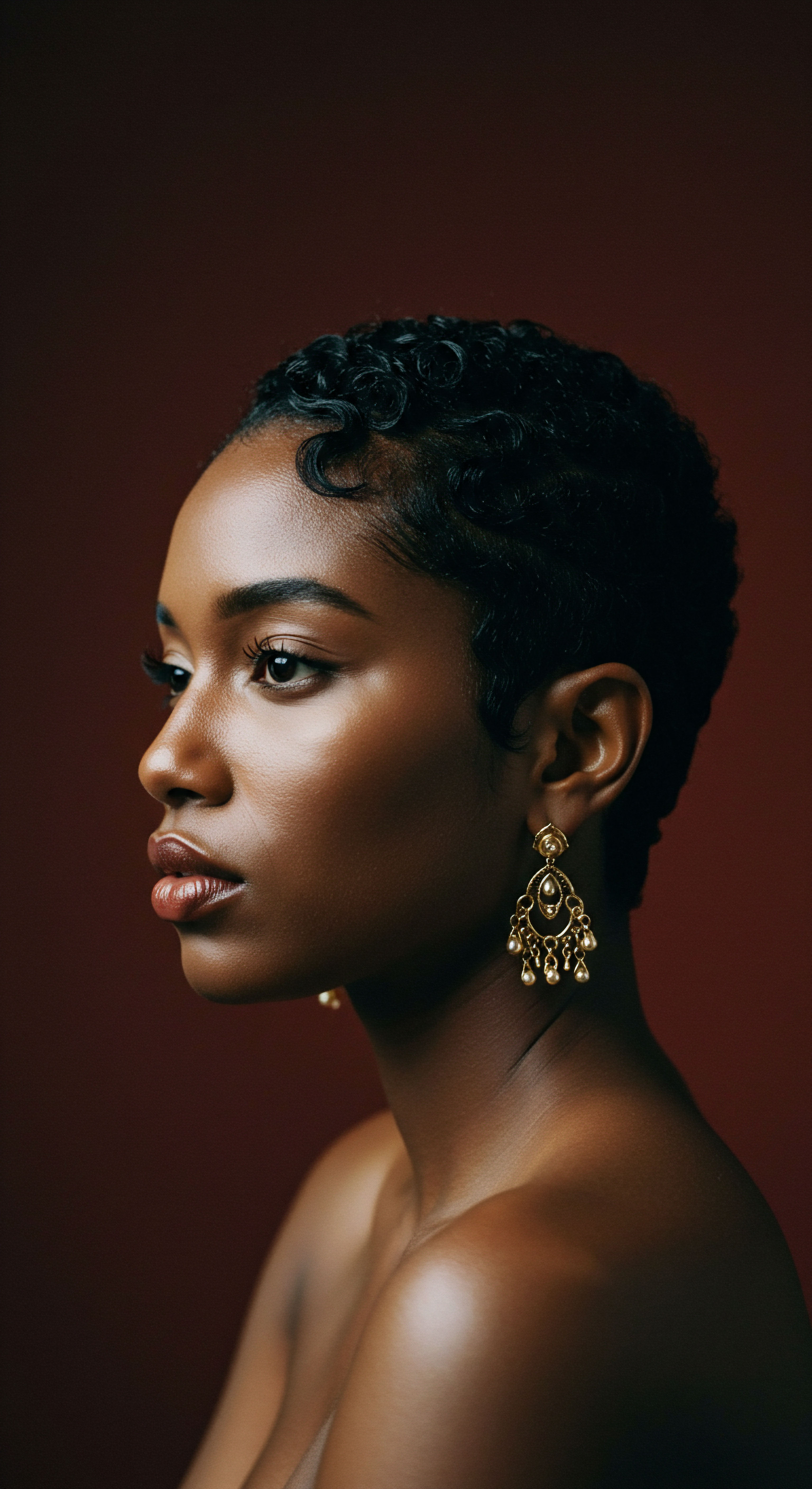
Relay
Beyond the visible and the practical, how deeply does the very composition of our water resonate with the intricate biological and cultural dimensions of coiled hair color? This inquiry compels us to consider the less apparent complexities, inviting us into a space where science, ancestral wisdom, and environmental particulars converge. The story of water’s impact on hair color extends far beyond surface-level observations, delving into the molecular interactions and the broader socio-environmental contexts that shape our hair’s living story.
To truly comprehend the nuanced interplay, we must step into the realm of chemical reactions and biological responses, examining how various water constituents engage with the hair’s protein structure and its inherent pigments. This calls for a deeper look at specific mineral interactions, the long-term effects of water treatment byproducts, and even the historical context of hair care practices in regions with distinct water profiles.

The Chemical Dance of Minerals and Pigment
The impact of water quality on hair color is not merely about surface deposits; it involves a complex chemical dance between dissolved ions and the hair’s protein matrix. Melanin, the pigment responsible for hair color, exists in two primary forms ❉ eumelanin (responsible for black and brown shades) and pheomelanin (responsible for red and yellow shades). These pigments are housed within the cortex of the hair shaft.
When hard water minerals, particularly calcium and magnesium, accumulate on the hair, they can form a crystalline layer. This layer not only dulls the external appearance but can also interfere with the penetration of light into the hair shaft, thus altering how the existing color is perceived. More significantly, certain metallic ions, such as copper and iron, can react directly with the hair’s keratin proteins and even with the melanin itself.
Consider the case of copper. Copper ions, often found in trace amounts in tap water or leached from copper pipes, can bind to the sulfur atoms in the keratin protein. This binding can lead to a phenomenon known as oxidative damage. When copper is present on the hair and exposed to light and oxygen, it can catalyze reactions that degrade the melanin.
For those with lighter hair, this often results in a green tint, a well-documented issue. For darker, coiled hair, the effect might be a subtle shift towards a duller, less vibrant brown or black, or an unwanted reddish undertone, as the eumelanin begins to break down or interact with the copper deposits. A study published in the Journal of Cosmetic Science explored the effects of metal ions on hair, indicating that copper and iron can indeed accelerate the oxidative degradation of hair color, particularly when exposed to UV radiation. This suggests that even seemingly innocuous trace elements in water can initiate a cascade of chemical events leading to perceptible color changes over time.
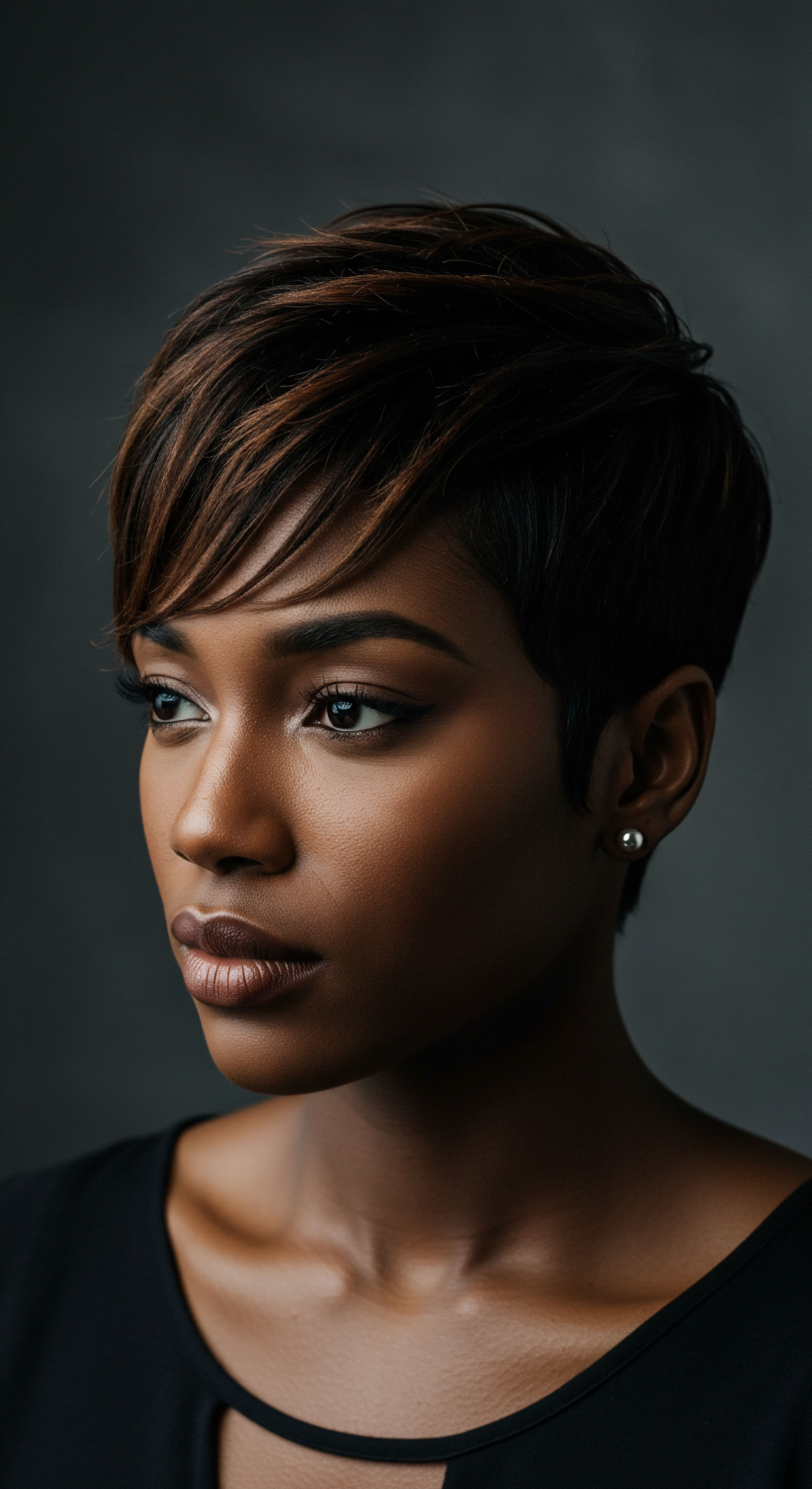
The Silent Influence of Water Treatment
Modern water treatment facilities ensure the safety of our drinking water, but the chemicals used in this process can also play a role in hair health and color. Chlorine, a widely used disinfectant, is known for its oxidizing properties. While effective at killing bacteria, it can also strip the hair of its natural oils, leading to dryness and brittleness. For chemically colored hair, chlorine can actively break down dye molecules, accelerating fading.
Chloramines, a more stable disinfectant often used as an alternative to chlorine, are a compound of chlorine and ammonia. While less volatile than chlorine, chloramines can still be drying to the hair and may contribute to color fading over extended periods. The long-term exposure to these disinfectants can subtly alter the hair’s protein structure, making it more porous and less able to retain its pigment, whether natural or artificial.
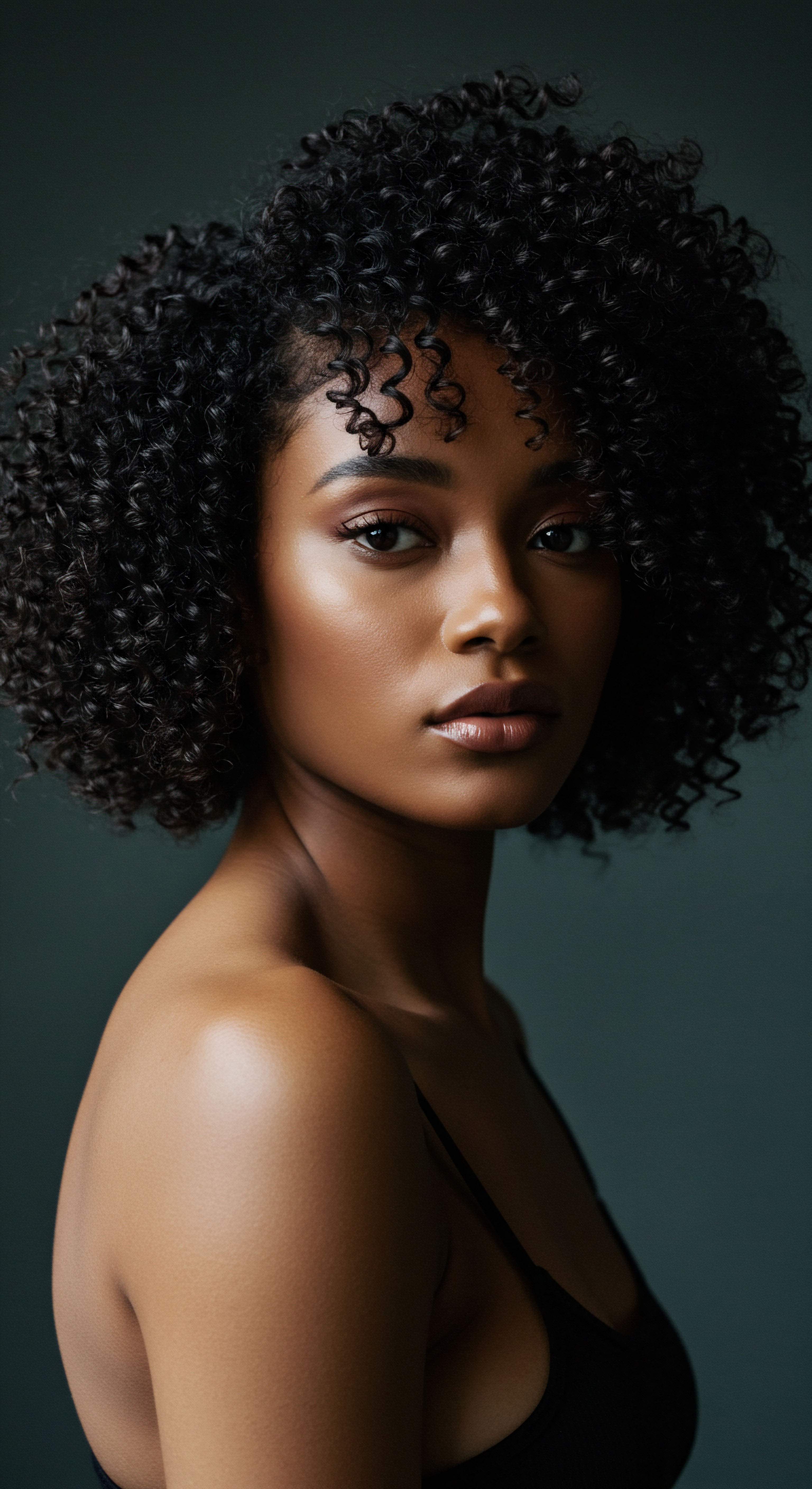
Cultural Hair Practices and Water’s Role
Throughout history, and across diverse cultures, hair care practices have often been intimately tied to the local environment, including the quality of available water. In some traditions, specific plants or clays were used not only for cleansing but also for their ability to soften water or neutralize its effects. For instance, in certain African traditions, plant-based rinses or specific clays were historically employed, which, unbeknownst to their users in scientific terms, might have possessed chelating or pH-balancing properties.
The modern challenge, then, lies in understanding how our ancestral hair types, which evolved in harmony with specific natural environments, interact with the standardized, often chemically treated, water of contemporary urban settings. This intersection of inherited hair characteristics and modern water infrastructure creates a unique set of considerations for preserving the innate beauty and color of coiled hair. The concept of “terroir” – the idea that a place’s physical environment, including its water, shapes its products – can be loosely applied to hair, suggesting that our hair, too, carries the subtle imprint of its hydration source.
The subtle yet profound influence of water quality on coiled hair color extends to molecular interactions and broader socio-environmental contexts.
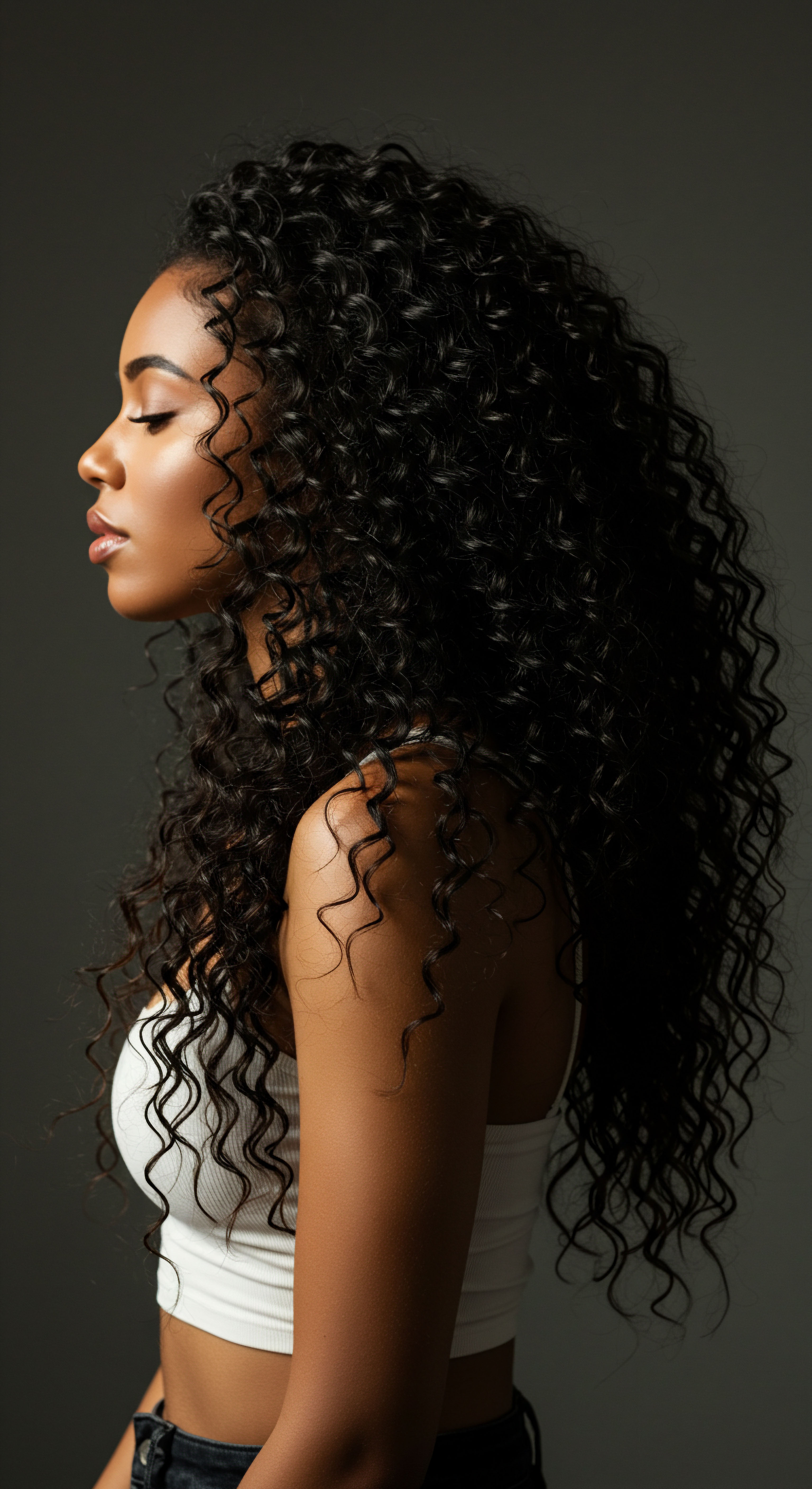
Is Water the Sole Determinant of Hair Color Shifts?
While water quality undeniably influences coiled hair color, it is seldom the singular cause of significant shifts. The hair’s color is a dynamic interplay of various factors. Genetics stands as the primary determinant of natural hair color, dictating the type and amount of melanin produced. Age also plays a significant role, as melanin production naturally decreases over time, leading to graying.
Beyond these biological realities, external factors contribute to hair color changes. Sun exposure, particularly UV radiation, can lighten and degrade melanin, leading to natural bleaching. Heat styling, especially at high temperatures, can also cause thermal degradation of hair proteins and pigments, resulting in dullness or brassiness. Chemical processes, such as dyeing, bleaching, or relaxing, fundamentally alter the hair’s structure and pigment, making it more susceptible to environmental influences, including water quality.
Thus, while water quality can certainly contribute to dullness, brassiness, or accelerated fading of artificial color, it usually acts as one variable within a complex equation. Understanding its specific contribution allows for targeted interventions, but a holistic view of all influencing factors provides the most comprehensive approach to maintaining vibrant coiled hair color. The ongoing dialogue between our hair and its environment is a continuous one, demanding both scientific insight and an appreciation for its inherent resilience.
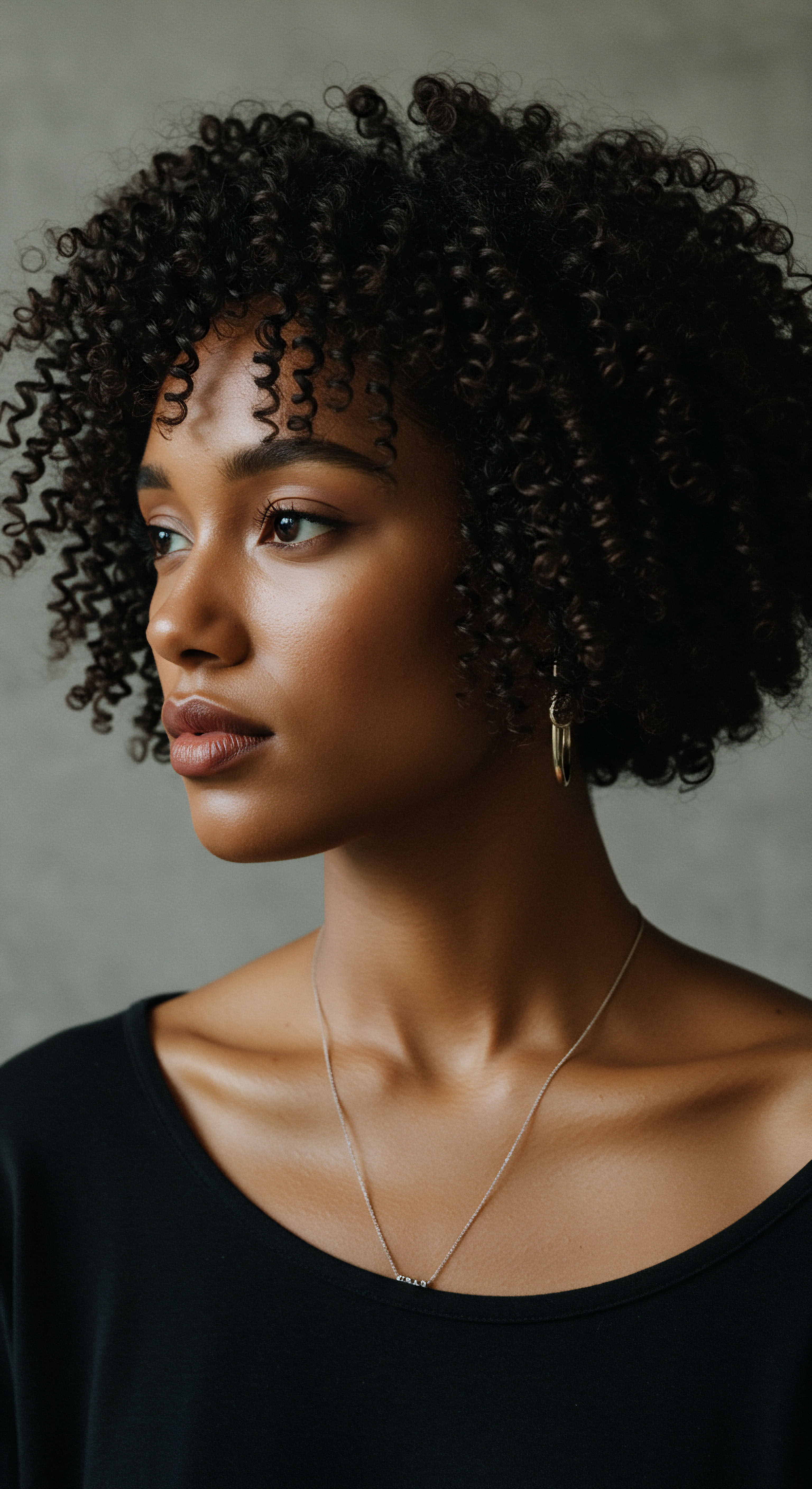
Reflection
The journey through the intricate world where water meets coiled hair color leaves us with a deeper appreciation for the subtle forces that shape our strands. From the elemental mineral deposits that veil vibrancy to the precise chemical interactions that subtly alter pigment, the narrative of water’s influence is far more complex than a simple rinse. It invites us to consider our daily rituals not as mundane tasks, but as mindful engagements with the environment, recognizing the profound connections between the water that sustains us and the living beauty of our hair. This understanding empowers us to move beyond superficial solutions, embracing a more informed and gentle approach to preserving the unique hue and health of our coiled hair.
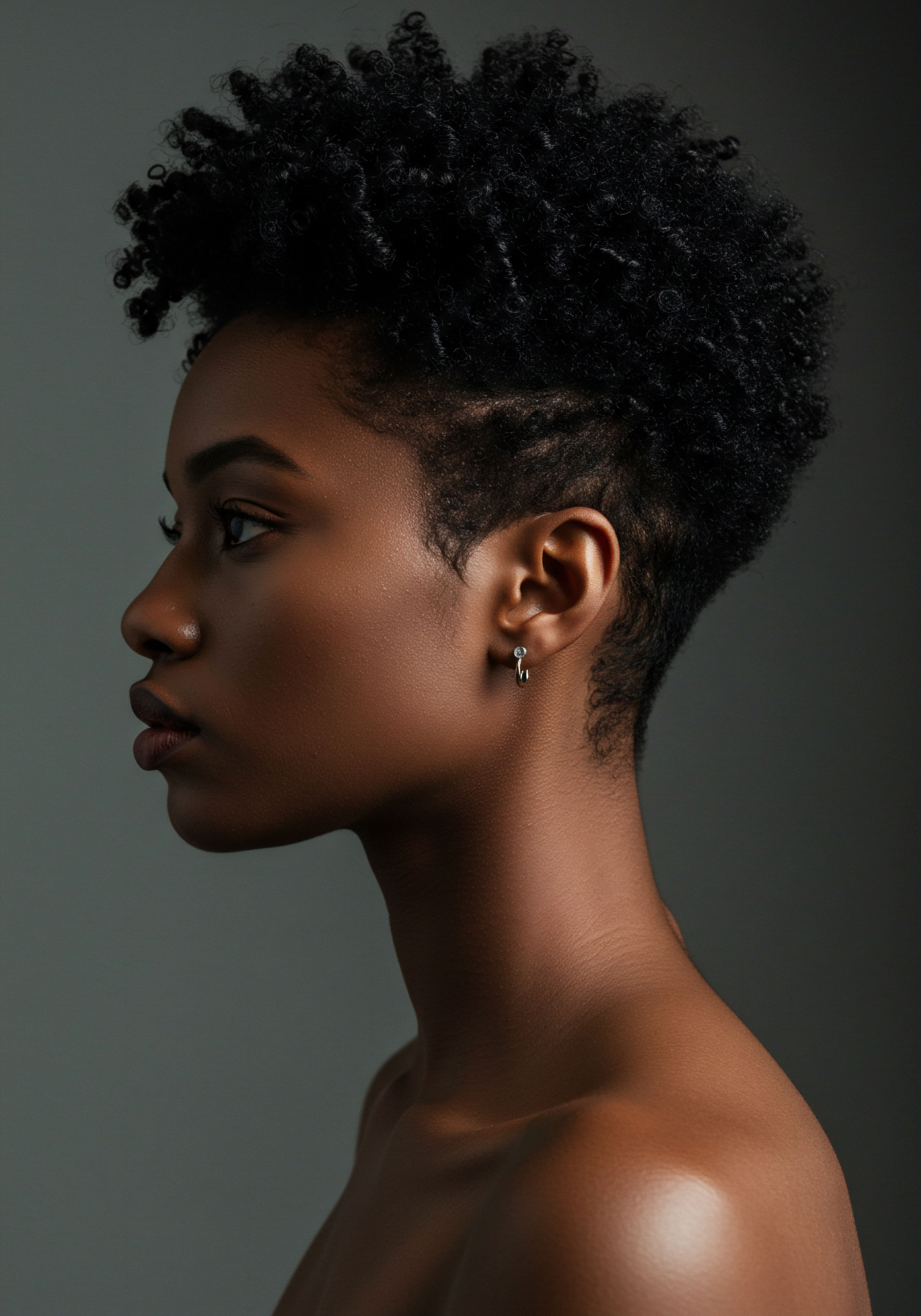
References
- Hoting, E. et al. “Effect of Metal Ions on the Oxidation of Hair.” Journal of Cosmetic Science, vol. 54, no. 5, 2003, pp. 465-476.
- Robbins, Clarence R. Chemical and Physical Behavior of Human Hair. 5th ed. Springer, 2012.
- Bhushan, Bharat. Biophysics of Hair. Springer, 2010.
- Johnson, D. H. and A. A. R. E. A. N. D. P. G. W. A. R. R. E. N. “Water Quality and Health.” World Health Organization, 2011.
- Gohl, W. “Textile Auxiliaries.” Fibers, Yarns, and Fabrics, Springer, 2008.
- Franbourg, A. et al. “Current Trends in Hair Science.” Journal of Cosmetic Science, vol. 57, no. 5, 2006, pp. 385-400.
- Gavazzoni Dias, Maria Fernanda. “Hair Cosmetics ❉ An Overview.” International Journal of Trichology, vol. 7, no. 1, 2015, pp. 2-15.